“Storytelling in wood is like writing poetry. You have to think like a poet. The pictures then come from inside you, directly from the world of thought.”
Mirhalim Yahyoev and his brother work in their shared workshop in a simple, low-rise wooden house, across the road from the market in Istaravshan, a city in northwestern Tajikistan. Just enough light comes in through the low windows, and the two men fuel themselves throughout the day with endless cups of green tea.
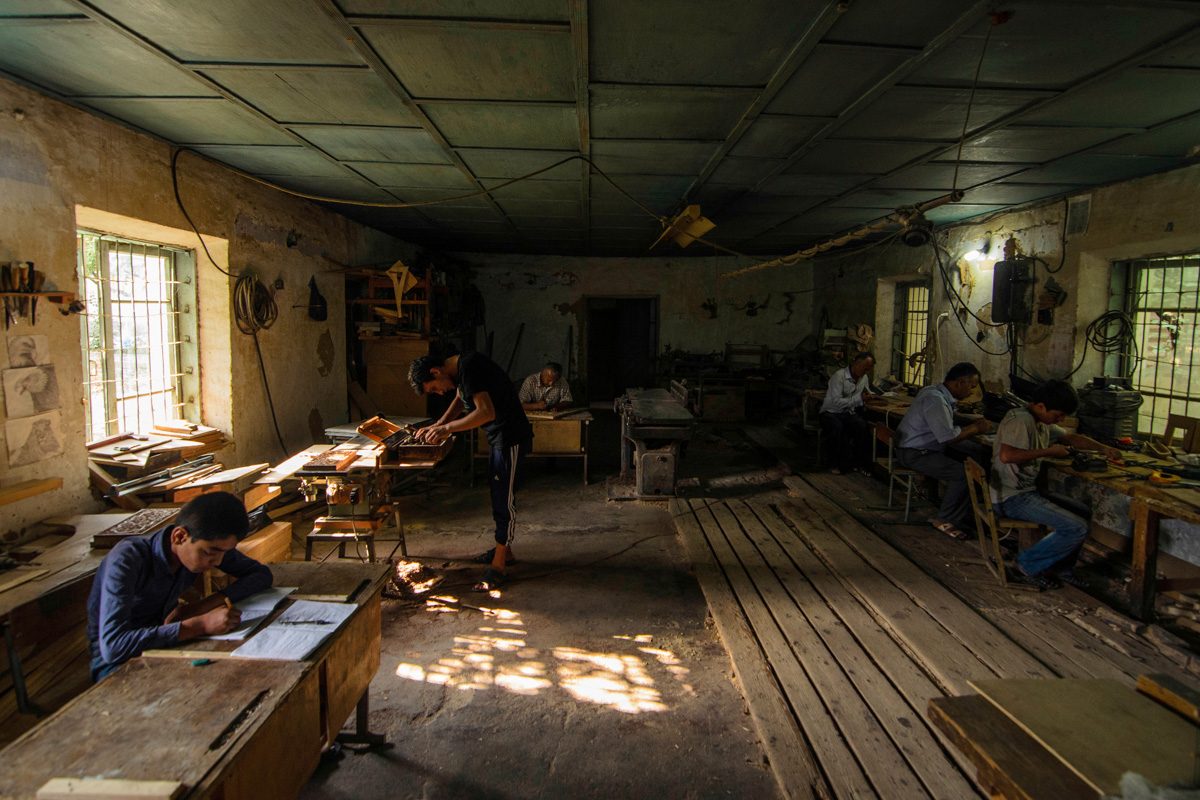
Mirhalim talks constantly, his voice rhythmic and his words never rushed. The pattern and speed of his speech mirrors the small, repetitive movements of his hand, tapping which his chisel against the wood. I watch him intently, hour after hour, as the flowering branch he is working on begins to take shape. This kind of woodworking — known as kandakori — dates back to the time of the Silk Road, and the Yahyoev brothers are two of the last mastercraftsmen continuing the tradition in Istaravshan.
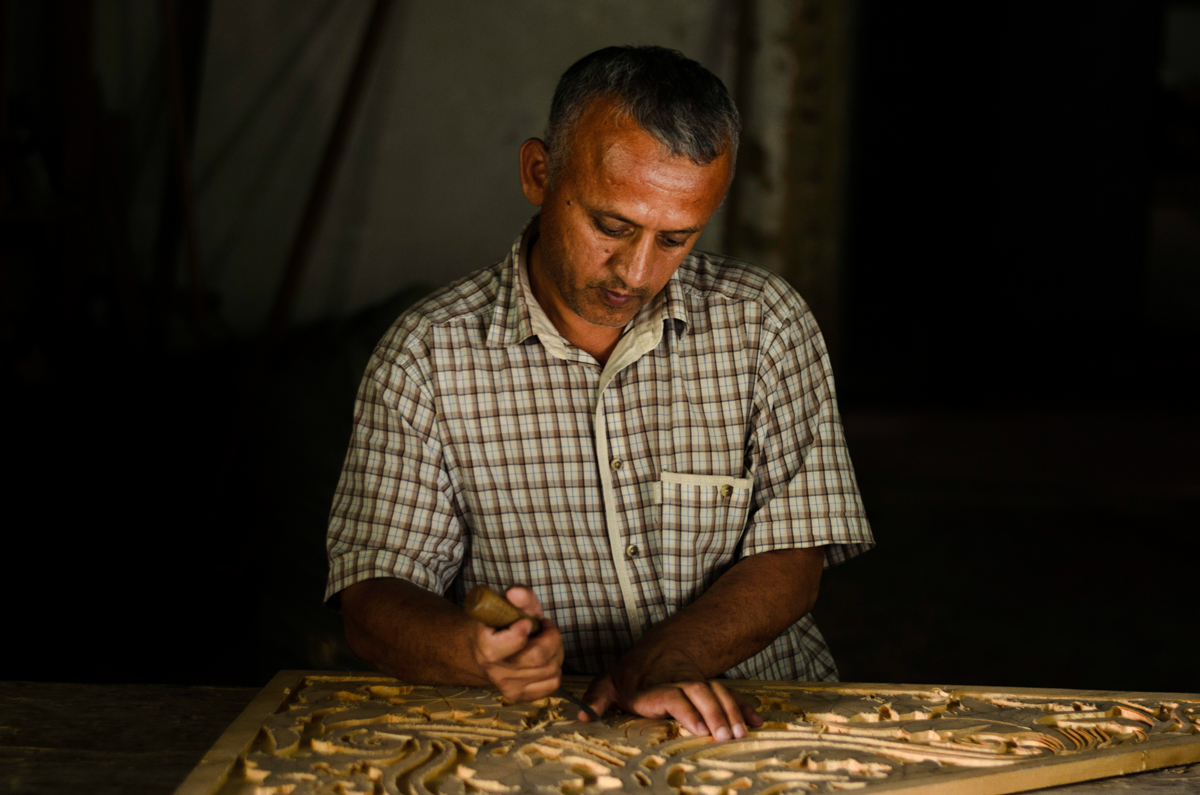
When Mirhalim finally takes a break, he pulls out a family photo album. His father, Ustad Ali, stands at the centre of a huge portrait featuring more than a hundred family members. “We follow the traces of our dad, who was one of Istaravan’s most skilled masters,” explains younger brother – Mirhakim. “That’s why he gained the title Ustad — it comes from the Persian and is reserved for the most accomplished artisans.”
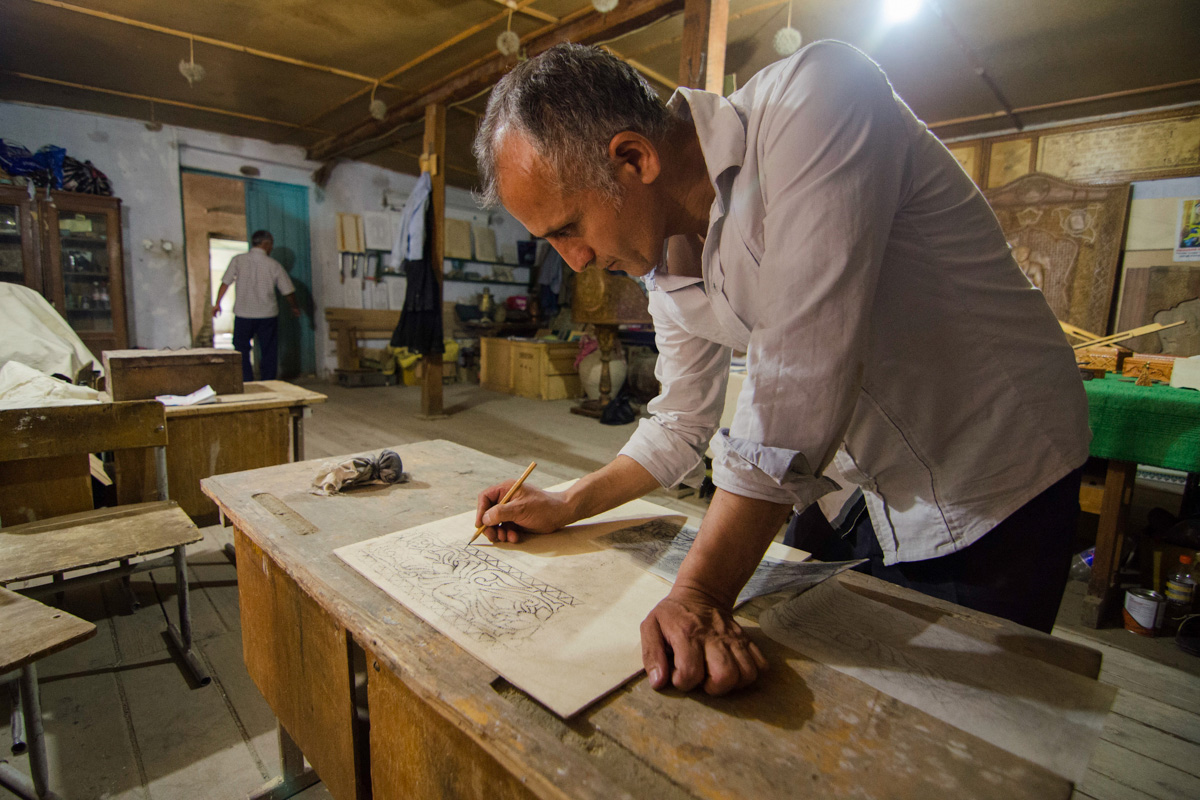
Ustad Ali had a distinguished career. When Tajikistan was part of the Soviet Union, he was asked to mark its 60th anniversary by carving a new set of doors for the Kremlin in Moscow. You can see his wall panels hanging in the National Museum of Tajikistan, and he taught more than a hundred wood carvers, though few of them still follow his path. His sons are understandably proud.
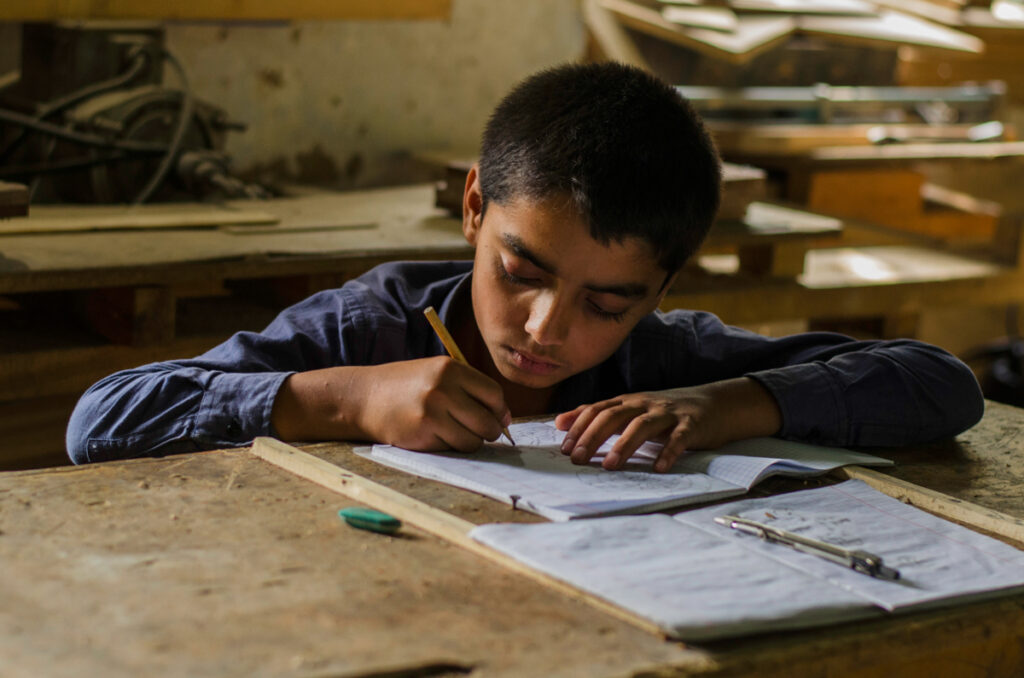
Around the workshop there are various semi-cut products. Beams are leaning against the walls; wooden pieces await to be assembled into furniture in the workroom. One of Mirhakim’s sons leans over a backgammon board made of dark wood and decorates its front. There is a faint smell of cedarwood, and the coasting of dust on the work surfaces and in the air is omnipresent. Planks of apricot wood have been cut from orchards just outside Istaravshan, and the dense walnut comes from forests across the border in Kyrgyzstan.

I think of the Yahyoev brothers as hereditary artisans: their skills have been passed down, father to son, through the generations, and it very much a family business. This is a sharp contrast with my second set of subjects, the female kandakori woodworkers I photographed just outside Istaravshan.
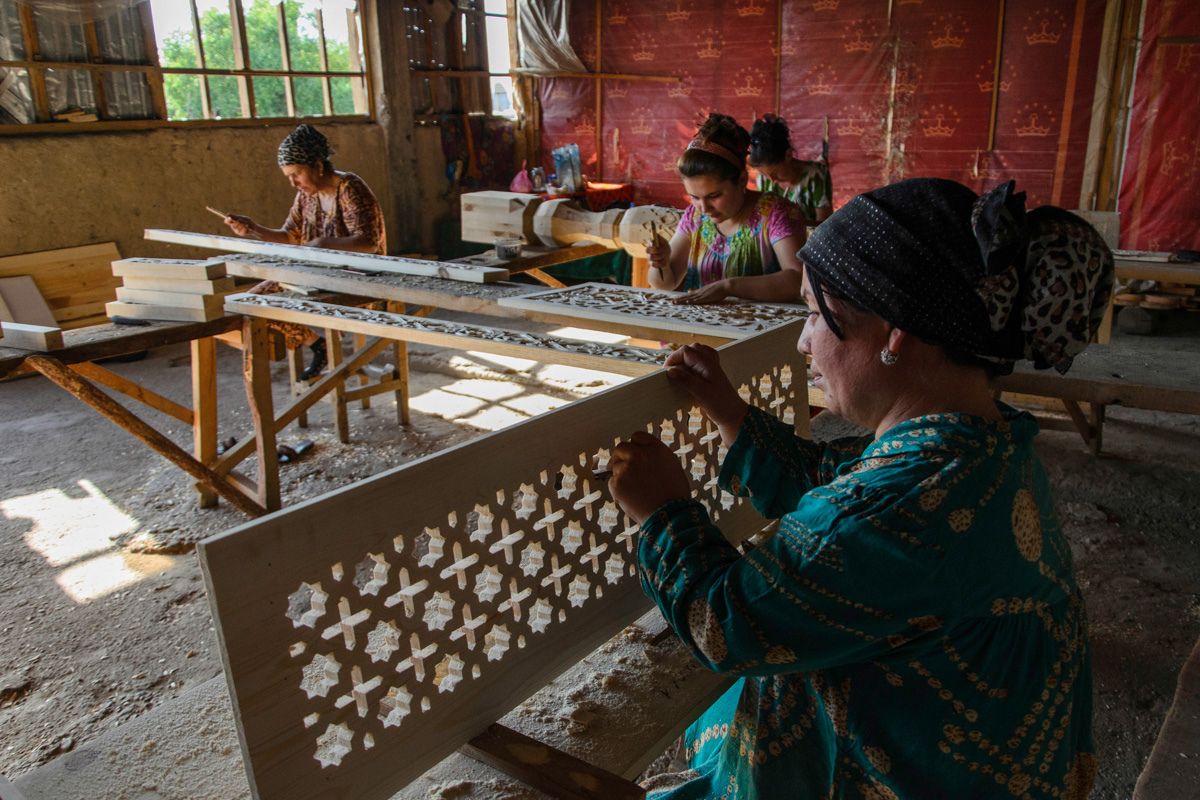
Hasanova Rano and her colleagues came to carpentry in adulthood. She used to work in a textile factory in the city, but as her husband is a migrant worker away for long periods in Russia, she wanted a reliable source of income closer to home. “The best thing about kandakori is the freedom,” she explains to me. “The thoughts walk freely when you work; you’re completely caught up in the moment.”
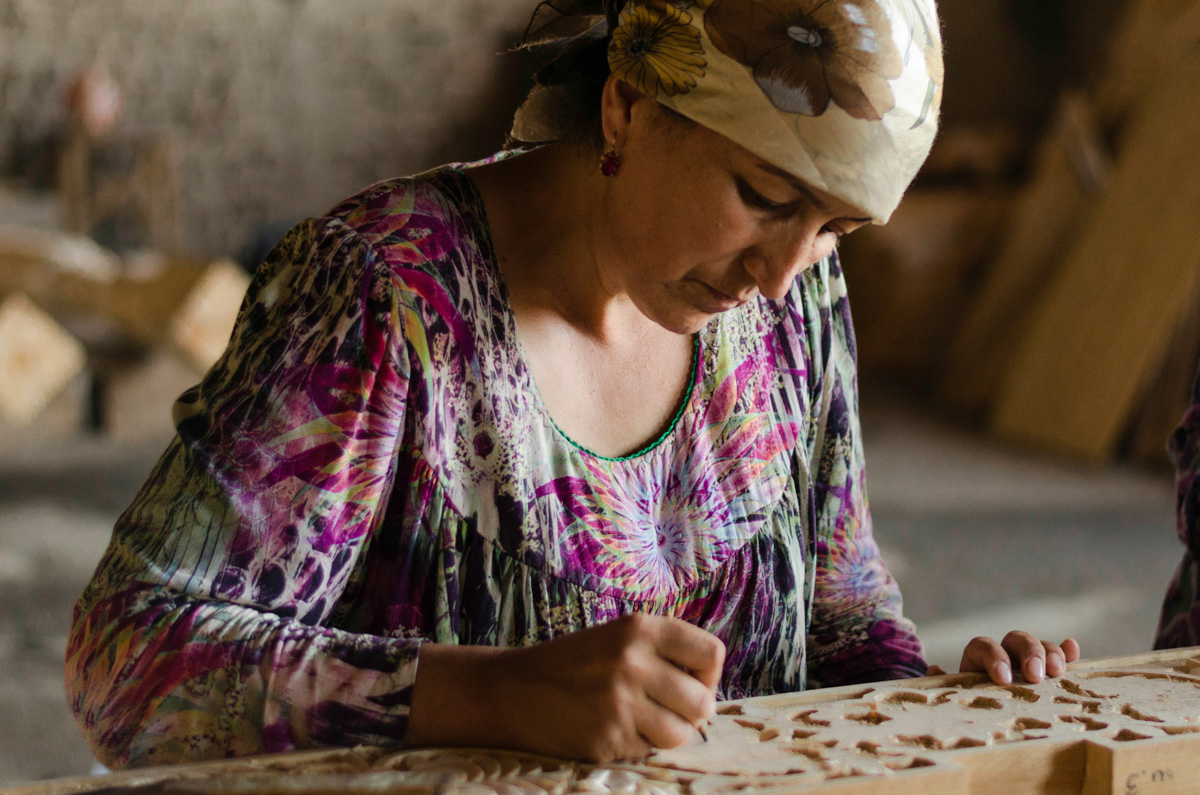
Hasanova has sketched out a plant motif on the surface of the wood, and she steadily carves out its contours. Natural motifs have been common in Tajikistan’s nomadic traditions since the Zoroastrian period, and those depicting stylised plant forms survived the arrival of Islam.
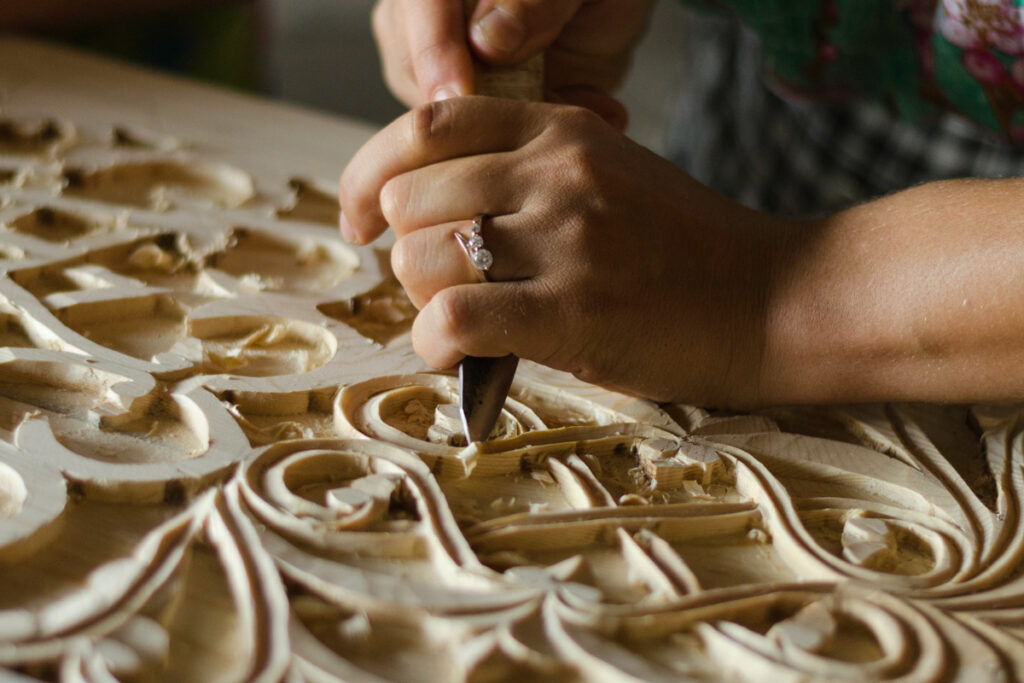
Wood carving is integral to the architecture in Tajikistan. Beautiful wooden details have long ago decorated buildings and the façades of houses. The large tea houses have handcrafted balconies and ceilings, and are the centrepiece of many villages and towns. When Dushanbe’s mayor visited Boulder, Colorado, he gifted his hosts a large tea house. It took 40 kandakori craftsmen more than three years to carve, decorate and hand paint. Today, thirty years on, you can still admire their handiwork in Boulder.

As a photographer, I’m entranced by kandakori. Like Mirhakim, I too have a need to think like a poet, seeing the picture in my mind’s eye before I attempt to frame it and capture it with my camera. I, too, am a storyteller. In my work I am telling the story of a long line of kandakori craftsmen, their artistry, and their contribution to Tajik culture. This story is written on the faces of the Yahyoev brothers, in the dexterity of the way they move their hands, and in the detail of the intricate carvings they make. The creative process is one to be shared in the visual language each one of us knows best.
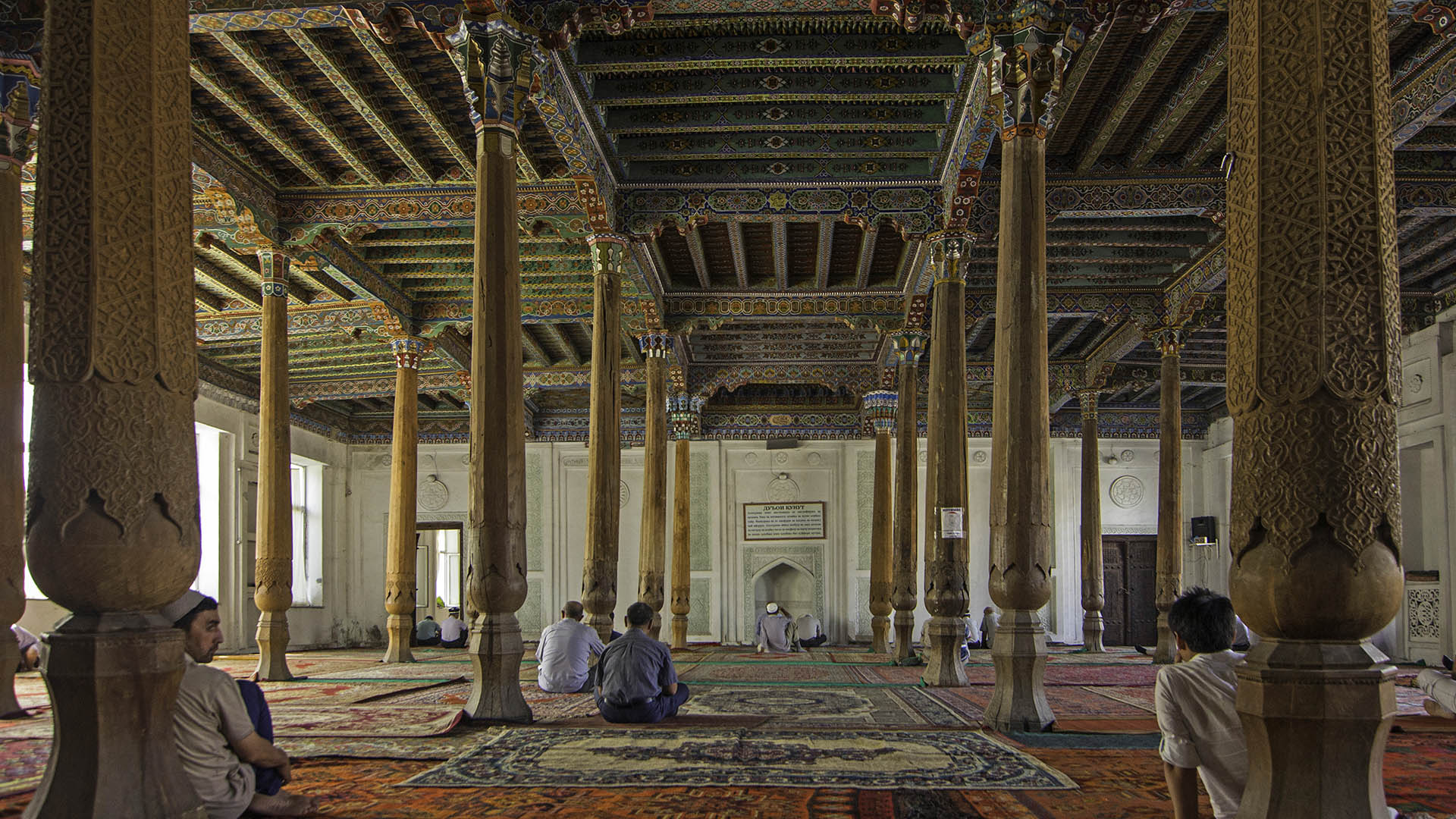
Text by: Jenny Gustafsson
Translation by: Sophie I.
Photo by: Alovaddin Kalonov



